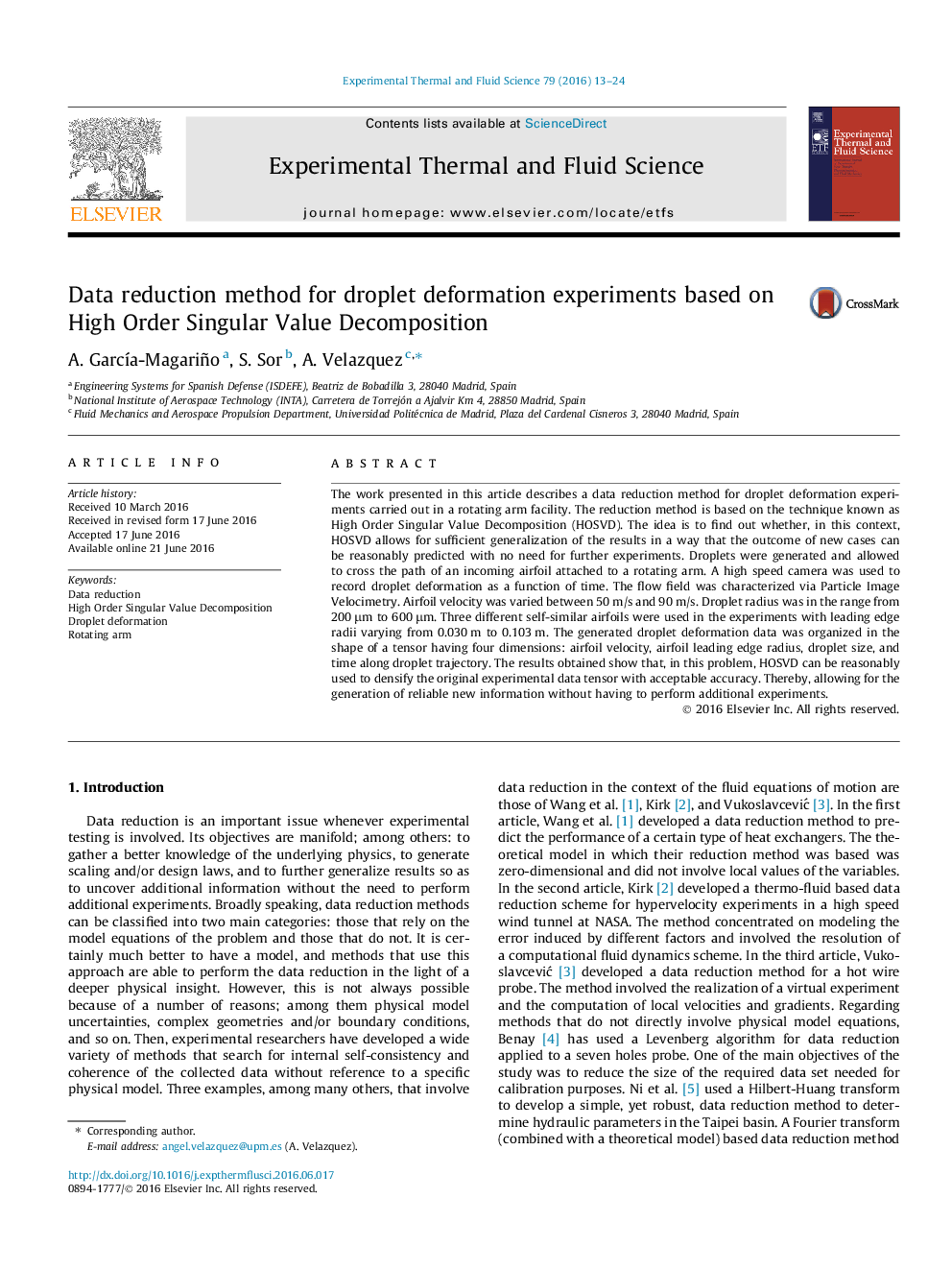| Article ID | Journal | Published Year | Pages | File Type |
|---|---|---|---|---|
| 651077 | Experimental Thermal and Fluid Science | 2016 | 12 Pages |
•An experimental data reduction study is presented on droplet deformation and breakup.•Droplets evolve in the vicinity of an incoming airfoil.•Experiments are carried out in a rotating arm facility.•Different airfoils are attached to the rotating arm.•The data reduction method is based on High Order Singular Value Decomposition.
The work presented in this article describes a data reduction method for droplet deformation experiments carried out in a rotating arm facility. The reduction method is based on the technique known as High Order Singular Value Decomposition (HOSVD). The idea is to find out whether, in this context, HOSVD allows for sufficient generalization of the results in a way that the outcome of new cases can be reasonably predicted with no need for further experiments. Droplets were generated and allowed to cross the path of an incoming airfoil attached to a rotating arm. A high speed camera was used to record droplet deformation as a function of time. The flow field was characterized via Particle Image Velocimetry. Airfoil velocity was varied between 50 m/s and 90 m/s. Droplet radius was in the range from 200 μm to 600 μm. Three different self-similar airfoils were used in the experiments with leading edge radii varying from 0.030 m to 0.103 m. The generated droplet deformation data was organized in the shape of a tensor having four dimensions: airfoil velocity, airfoil leading edge radius, droplet size, and time along droplet trajectory. The results obtained show that, in this problem, HOSVD can be reasonably used to densify the original experimental data tensor with acceptable accuracy. Thereby, allowing for the generation of reliable new information without having to perform additional experiments.
